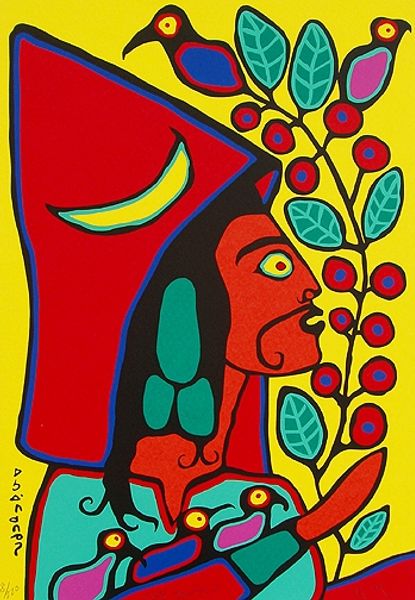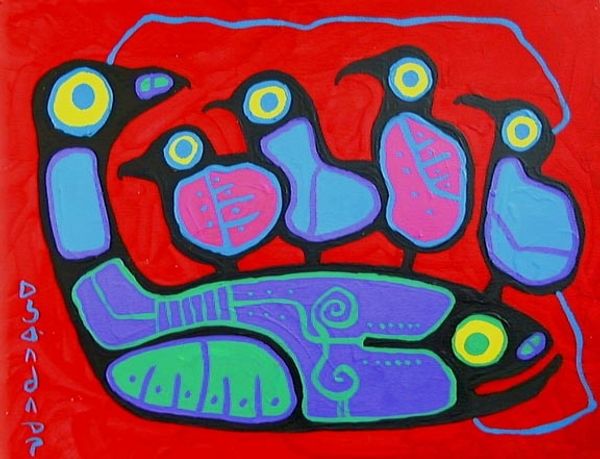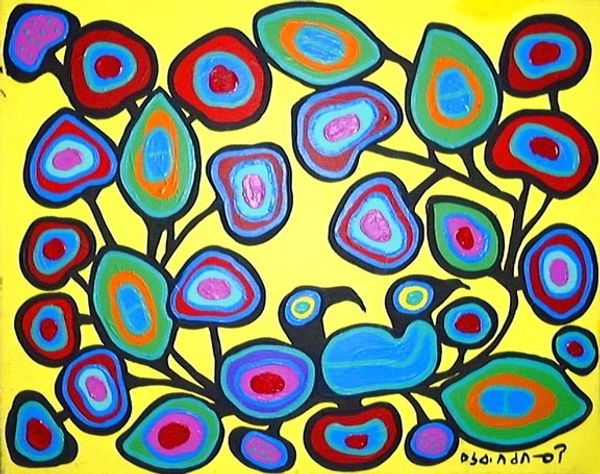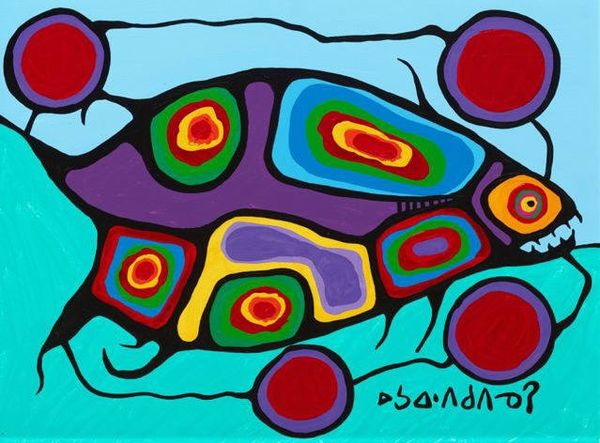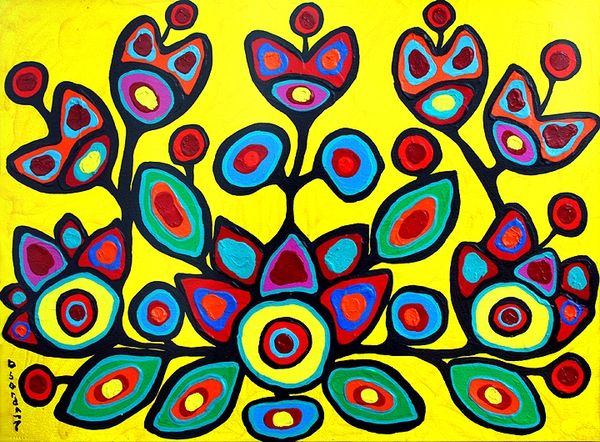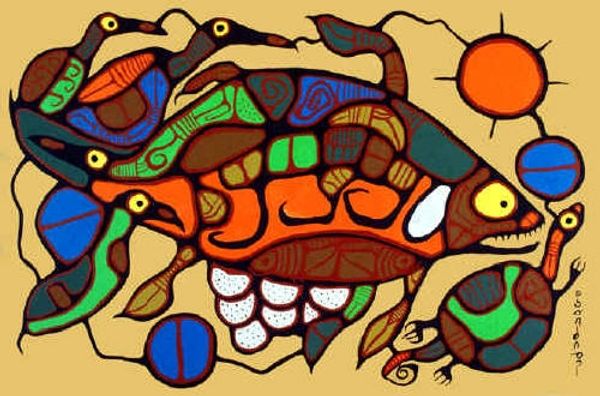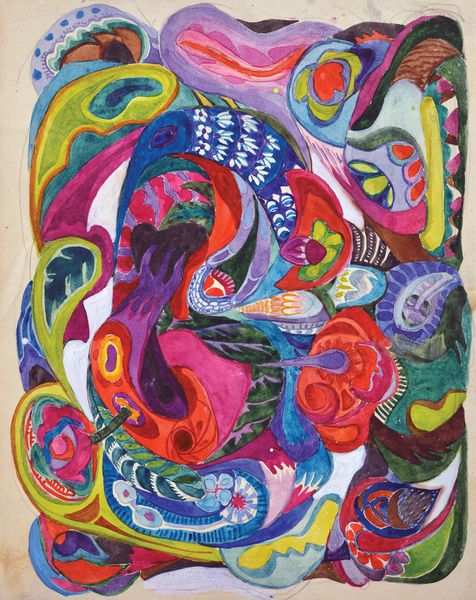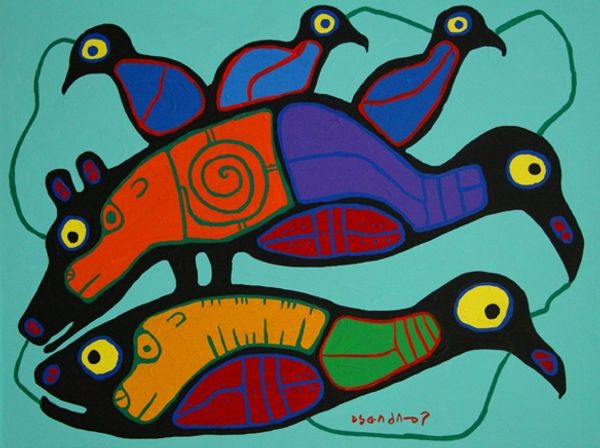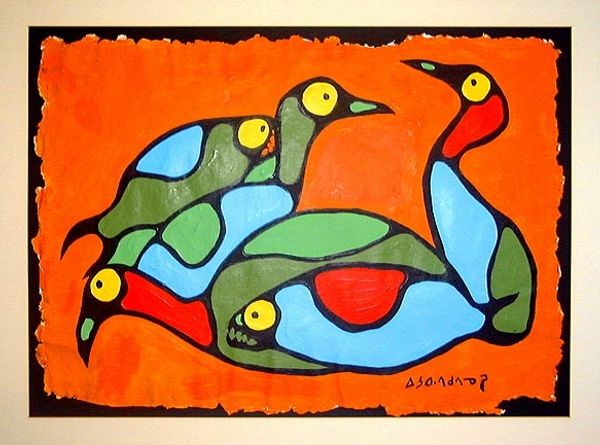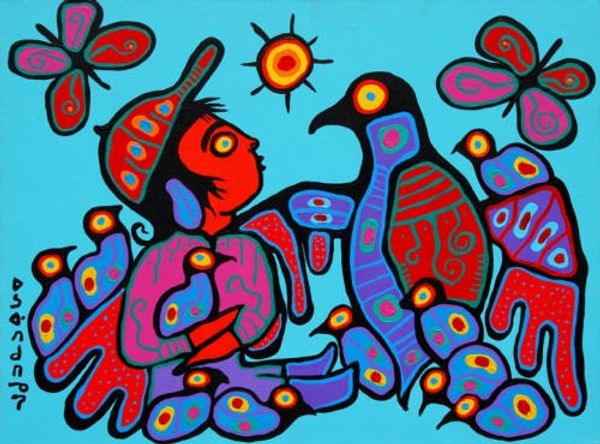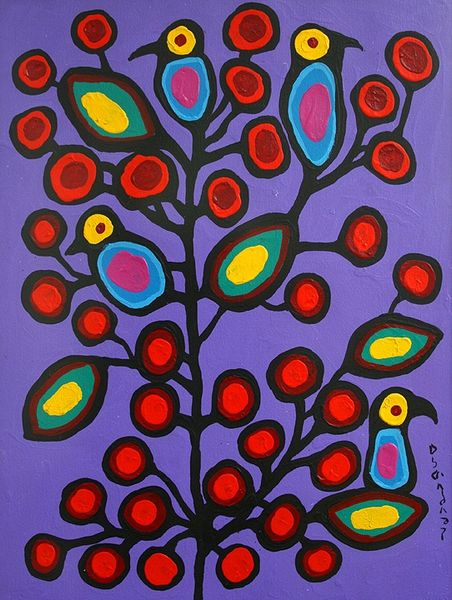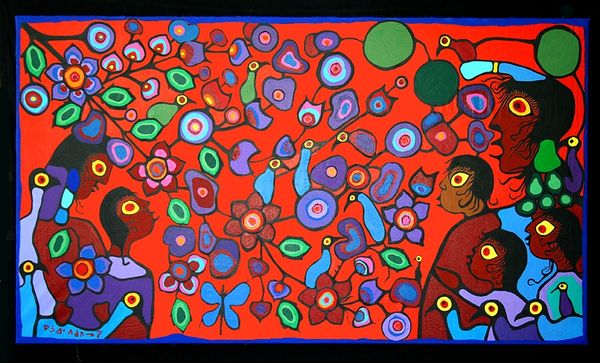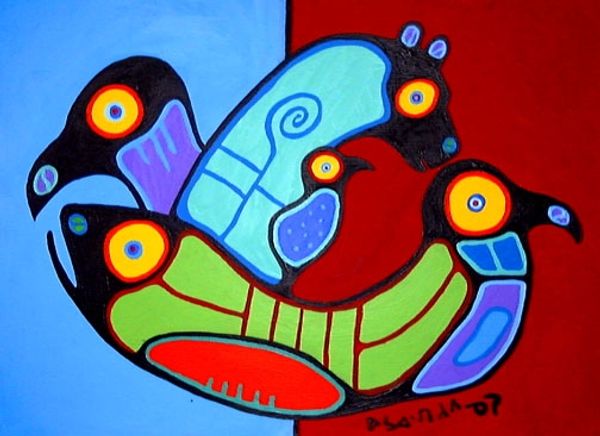
Copyright: Estate of Norval Morrisseau
Editor: We're looking at Norval Morrisseau's "Sacred Trout Through The Portal of Time" from 1978, painted with acrylics. I'm immediately struck by the boldness of the colors, and how they’re outlined in black—it’s almost stained-glass-like. What’s your perspective on this piece? Curator: What intrigues me is the construction. Consider the industrial production of acrylic paint in contrast with the very personal, spiritual subject matter of Morrisseau's work. The availability of these synthetic materials, post-World War II, allowed for unprecedented vibrancy and durability, but also facilitated a wider distribution and, arguably, a commodification of Indigenous artistic expression. What impact might the use of these paints have on the perception and value of Morrisseau’s art within both Indigenous communities and the broader art market? Editor: So, the accessibility of materials plays a big role in its meaning? Curator: Absolutely. It prompts questions about authenticity, appropriation, and the evolving relationship between art, material culture, and social power dynamics. Notice the flatness of the application, almost like silk-screening, versus the highly tactile possibilities offered by oil paint for example. Consider the limitations it puts on modeling, blending. What are the impacts of this decision, or limitation on Morrisseau's overall aims in communicating this subject? Editor: That's a different way of seeing it! It's less about the subject and more about how the physical properties inform its message. Curator: Exactly. By examining the materiality, we can unpack complex questions about cultural production and the circulation of meaning. Editor: I hadn't thought about that. I’ll definitely look at materials with new eyes now. Curator: Indeed, and remember that it's one pathway into the artwork: thinking through material!
Comments
No comments
Be the first to comment and join the conversation on the ultimate creative platform.
